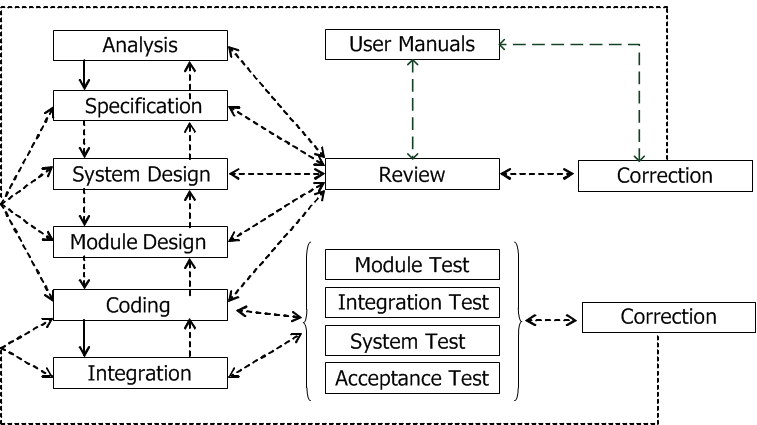The QA - Model: Difference between revisions
No edit summary |
No edit summary |
||
| Line 36: | Line 36: | ||
It is important that the correction of a review has to be successfully completed before a new examination of the same document can be performed. After correcting as many activities as needed can be performed. | It is important that the correction of a review has to be successfully completed before a new examination of the same document can be performed. After correcting the documents, as many activities as needed can be performed. | ||
Revision as of 19:55, 8 May 2013
The QA - Model is the first fully developed model, that is used for SESAM - Simulation. The model is focused on the development of software for small to medium projects. To be precise it is primary focused on quality assurance measurements and therefore the model is called Quality Assurance - Model (QA - Model).
The QA - Model requires a proper procedure from the trainees for filling vacancies as well as the progress and quality control. The analysis, the specification, the coarse and fine design, code, and the manual as well as the integration and delivering of the system have to be performed. In addition, all documents have to be reviewed. Module, integration, system and acceptance tests also have to be performed. The trainee is also responsible for hiring employees, assign tasks to them and release them.
| All of this is carried out under the model depending on time and within the budget! |
Waterfall Model
The Waterfall Model was chosen, where this has been extended by additional structural and analytical measures. The model leaves it to the trainees to decide in which order they perform the various activities. The possible procedures in the QA - Model are shown in the following figure:

The dashed arrows between the activities indicate that trainees not necessarily have to act according to the waterfall model. While there is a predefined sequence between the phases, the trainees are not forced to act like that.
Code-and-Fix Approach
However, the trainees are at least forced to create an analyzing document and to do the implementation . All other phases between analysis and implementation can be skipped. Thus, trainees can not be deterred from trying the Code-and-Fix approach.
Furthermore rollbacks to previous phases are possible, as long as the document to be jumped, still contains errors.
| Documents with remaining errors can be checked and corrected as often as necessary! |
It is important that the correction of a review has to be successfully completed before a new examination of the same document can be performed. After correcting the documents, as many activities as needed can be performed.